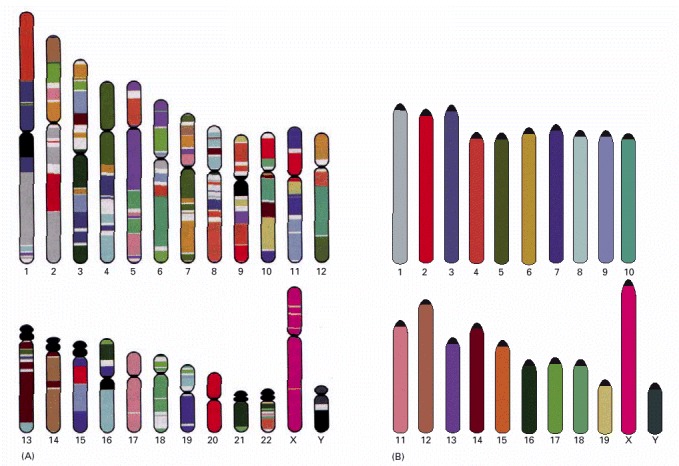From: Chromosomal DNA and Its Packaging in the Chromatin Fiber

NCBI Bookshelf. A service of the National Library of Medicine, National Institutes of Health.

Regions from different mouse chromosomes (indicated by the colors of each mouse in B) show conserved synteny (gene order) with the indicated regions of the human genome (A). For example the genes present in the upper portion of human chromosome 1 (orange) are present in the same order in a portion of mouse chromosome 4. Regions of human chromosomes that are composed primarily of short, repeated sequences are shown in black. Mouse centromeres (indicated in black in B) are located at the ends of chromosomes; no known genes lie beyond the centromere on any mouse chromosome. For the most part, human centromeres, indicated by constrictions, occupy more internal positions on chromosomes (see Figure 4-11). (Adapted from International Human Genome Sequencing Consortium, Nature 409:860–921, 2001.)
From: Chromosomal DNA and Its Packaging in the Chromatin Fiber

NCBI Bookshelf. A service of the National Library of Medicine, National Institutes of Health.